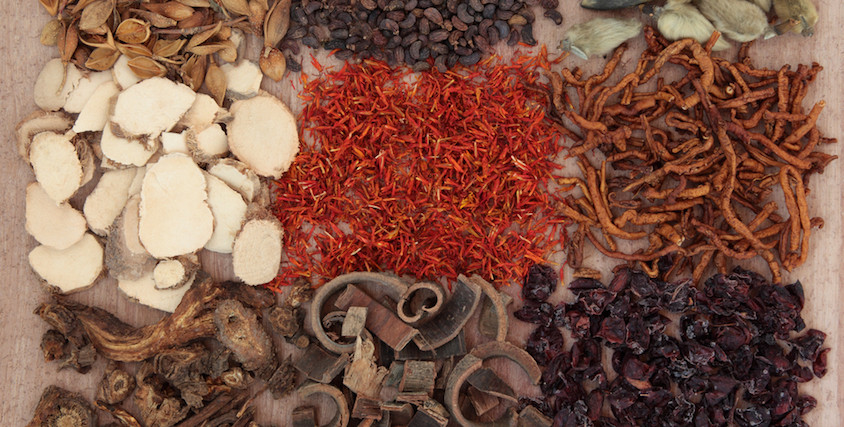
Known as old man saltbush, the salty leaves can be cooked and eaten or applied topically to cuts and stings (photo via Australian National Botanic Gardens.
Australia’s Aboriginal cultures derived much more value from the flora and fauna around them than is encompassed by the term ‘bush tucker’. In particular, native plants were not only harvested for food and tools, but certain species also held medicinal and spiritual value as well.
Various parts of any given plant may be utilised in a number of ways, and depending on the species these uses may only be available at certain times of the year as a result of seasonality. Furthermore, the processes and techniques required to render a plant useful – in whole or in part – may often be labour-intensive and detail-oriented in order to avoid a potentially fatal incident.
The following is a list of some of the plant species or plant families and their known uses as medicines for the Koori people of Victoria. It is by no means exhaustive and Wild makes no claim as to the actual efficacy of these plants as medicine. We advise that these remedies should not be used by anyone who hasn’t been trained in traditional preparation techniques.
This article has been compiled with the assistance of Dr Beth Gott, caretaker of the Aboriginal Garden at Monash University, Clayton. For a full list of plants, their Aboriginal names and utility, be sure to download the information sheet from the Monash University website.

Fruit and leaves of the Austral mulberry (via Friends of Tarra Bulga).
Austral mulberry (Hedycarya angustifolia) – The fruit of this plant are not edible, but are used as a topical ointment for cuts and stings. The stems of the plant also make good fire drills and spear prongs due to their straight, hard nature.
Bracken (Pteridium esculentum) – Green shoots are commonly rubbed on insect bites, while the root, or rhizome, is a source of edible starch once cooked and separated from fibrous parts.

The cherry ballart’s fruit has a sits atop the red ‘false fruit’ (photo via North Queensland Plants).
Cherry ballart (Exocarpus cupressiformis) – Found in sclerophyll forest, the foliage of this plant is toxic to stock but its fruit has a sweet, edible red stem. The sap is applied topically to treat snakebite.
Drooping sheoak (Allocasuarina verticillata) – Mature cones from this tree are ground up and applied to sores to treat rheumatism. Extracts from the bark and wood are also used as a general medicine.
Hemp bush (Gynatrix pulchella) – The bark of this shrub can be used to make a basic string, while the leaves are used as a poultice for boils and ulcers.
Old man saltbush (Atriplex nummularia) – The salty leaves are commonly cooked and eaten, but can also be applied topically as a medicine for cuts and stings.
Old man weed (Centipeda cunninghamii) – Commonly found along the Murray, as well as other low-lying, swampy habitats, this plant is considered efficacious for many complaints including eye infections, tuberculosis and skin complaints and is administered as an extract in water or sometimes rubbed onto the skin.
Punty bush (Senna artemisioides) – A dry-country species with many subspecies, the seeds of the punty bush are edible, while the leaves used for a medicinal wash

The river mint grows in wet environments and has a minty scent (via Museum Victoria).
River mint (Mentha australis) – A native mint used as a medicine for coughs and colds, ingested in the form of a tea, it also makes for a flavouring herb for the lining of earth ovens.
Wattle (Acacia sp.) – The bark of wattles are ingested as a tea and used as a mild sedative for rheumatism or indigestion, but can also be used as a fish poison, most likely due to plant’s tannins. The gum of some species (golden, silver and black wattles) is edible, while other species have edible seeds.
This story originally appeared in Wild issue 151. Subscribe today.


